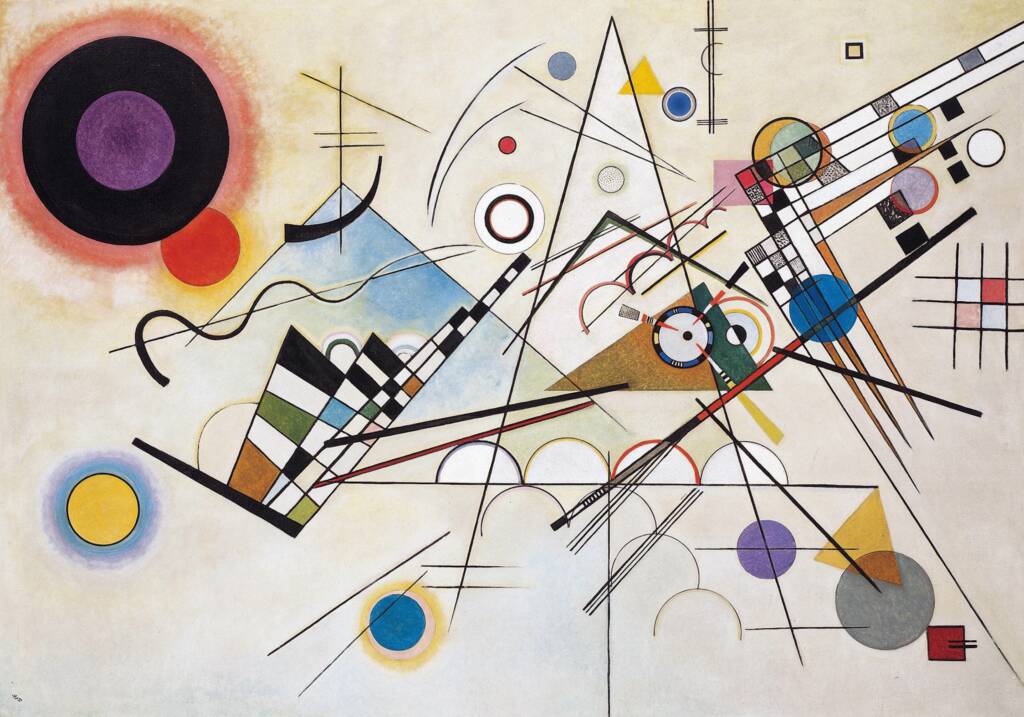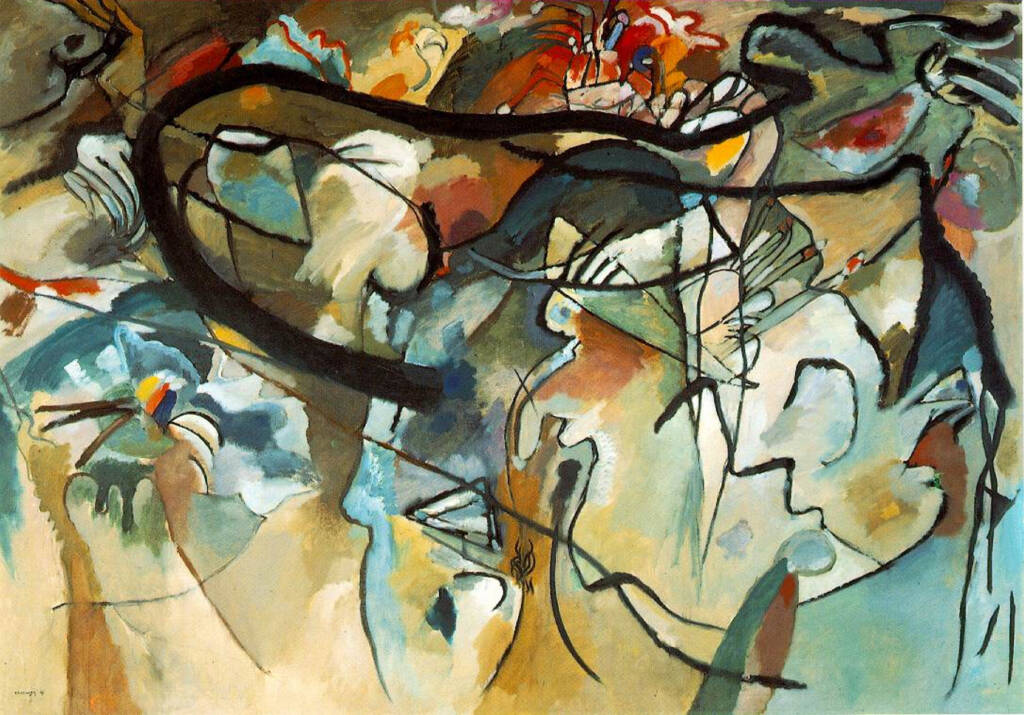Guest blog post by Sofia Greaves, PhD Researcher in Italian Modernism and urban planning at University of Cambridge
Recycling is typically understood through triangles and circles.
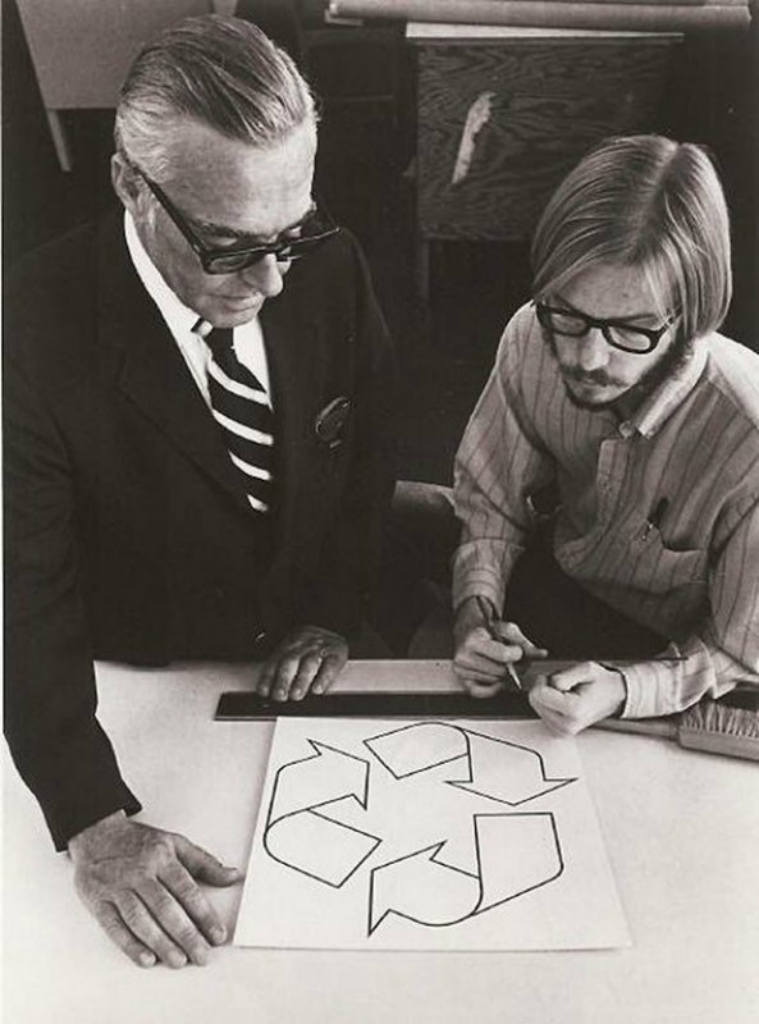
Gary Anderson came up with the triangle image in 1970. The circle is much more recent; it has been promoted by the European Commission since 2016, which calls for a transition to the Circular Economy. CE emphasises reuse, repair and recycling. These easily legible symbols stand in for a process which is obviously much more complex. When viewed instead as a formula, ‘recycling’ determines the actual environmental and economic benefit derived from this system. But circles and triangles brand recycling and consumption as ‘closed systems’. In such diagrams, there is no line between consumption and its effects. The primary problem with these symbols, therefore, is their failure to properly communicate the essential reasons why recycling happens at all.
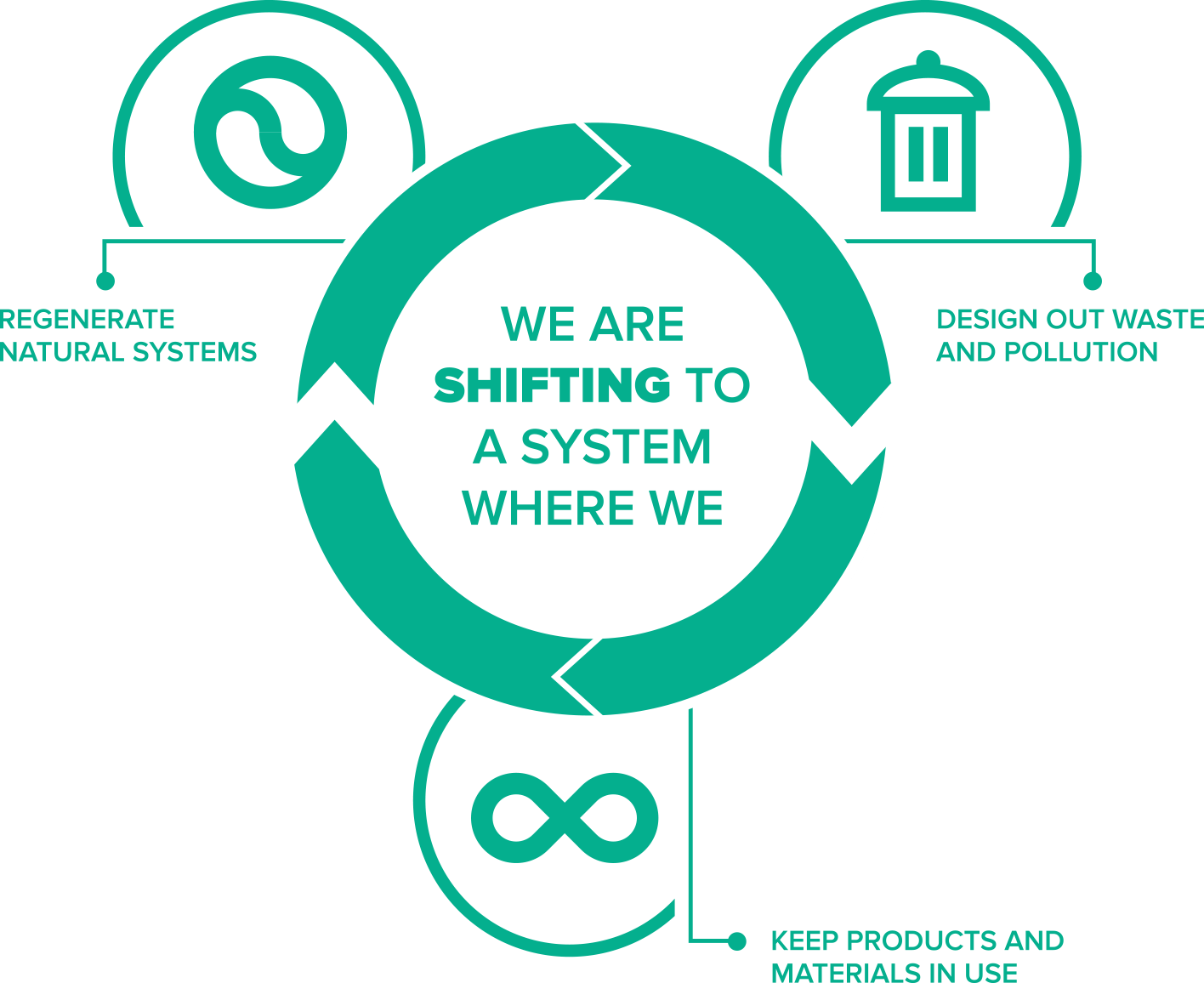
Kids Academy has a video on recycling.
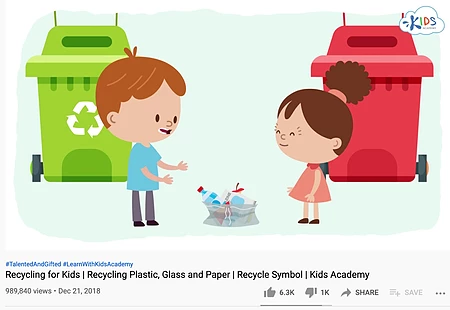
There are two bins.
“Wait a minute”, says Kid 1. “There are two bins, and one of them has a picture on it. What do you think it means?”
Kid 2 is very confused.
Mr Sammy explains, “Recycling is when we take old trash and make it into something new.”
Kid 2: “Wow! That’s amazing”.
Mr Sammy: “The recycling bins go to a special place called the Recycling plant. That’s where the magic happens. Bottles, cans, plastic and paper are chopped into TINY BITS. Then they are melted or turned into mush. Now, they can be used to make new things! That’s recycling!”
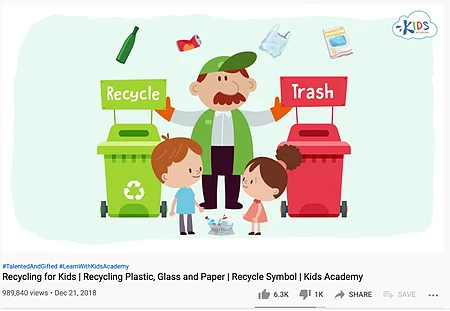
Unfortunately that is not what recycling is, as Trevor Zink explained at a seminar with ReTraCE, a project led by Andrea Genovese, which seeks to analyse ‘the circular economy paradigm’. Here Zink raised the depressing fact that material does not perpetually cycle; one aluminium can does not produce another aluminium can. If, ‘the primary reason we recycle is to displace primary production because primary production generates CO2/’, displacement does not happen 1:1. Therefore the trajectory of raw materials is ultimately linear. (Zink, 2017).
Nor does consuming second hand prevent the major problem. Primary production, which extracts raw material, is often not diminished by the secondary markets which recycled goods create. There are now two markets – secondary production creates a market from recycled goods. Their interactions are far from cyclical, and produce “Circular Economy Rebound”: ‘when circular economy initiatives, which have lower per unit production impact, increase levels of production and so reduce the benefit.’ It’s not that recycling is bad or ineffective per se; it just doesn’t make consumption in itself ok.
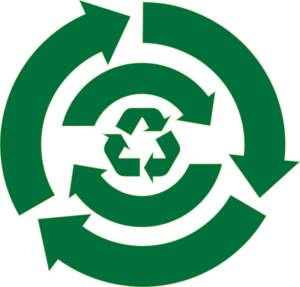
Recycling is therefore not a magic circle; it is more of a Kandinsky painting.
The Circular Economy suggests that the earth can contain the effects of its many markets, like Circles in a Circle, 1923. This is not true. Recycling is more like the unpredictable ‘Composition VIII’ above. Thinking like Circles in a Circle, links a cosmic symbol to an increasingly consumptive activity, as if to suggest that the two can exist in harmony.
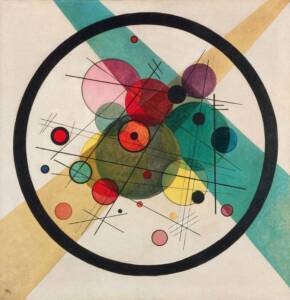
In sum, the circle is too flexible, because it promotes what it seeks to prohibit (Genovese and Pansera, 2020). Triangles and circles de-stigmatise waste such that it is possible to feel good about both consumption and excretion. But if recycling were not a circle or a triangle, what would it be? A symbol would have to indicate, unlike the circle, that consumption does not grow in any sphere without distorting other elements of the biosphere. But the problem with visualising any system, as Kate Raworth has raised in her Doughnut Economics, is the very function of an image: it provides a model which both explains processes, and becomes how they are understood. It is a cyclical process. Any image must therefore be questioned for its ability to shape more ‘scientific’ systems. Putting a sad or ‘bad’ face on bins is one possible answer to these problems. Bins have traditionally been happy consumers – a device which encourages bin use. Perhaps the opposite should be true. Seeing the bin as a magical hearth which transforms waste disconnects ‘what goes in’ and ‘what comes out’ – therefore, some have suggested transparency to expose the bodily juices mixing within the bin body. Visualising this material encourages joined up thinking, by making waste more of a spectacle.
Kandinsky also used abstraction to challenge existing scientific paradigms. He sought to make the invisibile visible by painting sound. Incidentally, Kandinsky was trained as an economist. As he explained, “for a long time, I believed in Science and maybe for this reason, I loved it.” But after the atom was split in 1911, it seemed like the makeup of the whole universe could be questioned. Kandinsky equated this event “with the collapse of the whole world” [1]. Science, in his words, ‘was destroyed’. He became a pioneering abstract artist and wrote ‘Concerning the Spiritual in Art’, a manifesto which laid out abstract principles for interpreting and representing nature – “Nature, has her own language and a powerful one, this language cannot be imitated”.[2] In Concerning the Spiritual, Kandinsky emphasized the importance of self-understanding to interpretation. It took work to understand ‘the principle of inner need’ – a responsibility he gave to both the artist and the viewer.[3]
— References
References
[1] Kandinsky, W. (1913) 1994. “Reminiscences.” In Kandinsky. Complete Writings on Art, edited by K. Lindsay, and P. Vergo, 364. New York.
[2] Kandinsky, W. (1911) 1946. “The Pyramid.” In Concerning the Spiritual in Art, edited by H. Rebay, 36. New York. Accessible online: https://www.wassilykandinsky.net/book-concerning_the_spiritual_in_art.html
[3] See Ashmore, J. 1962. “The Theoretical Side of Kandinsky.” Criticism 4 (3): 175-185. Retrieved February 22, 2021, from http://www.jstor.org/stable/23091068; Ashmore, J. 1979. “Vasily Kandinsky and His Idea of Ultimate Reality.” Ultimate Reality and Meaning 2 (3): 228-256. https://www-utpjournals-press.ezp.lib.cam.ac.uk/doi/pdf/10.3138/uram.2.3.228
Genovese, A., and M. Pansera. 2020. “The Circular Economy at a Crossroads: Technocratic Eco-Modernism or Convivial Technology for Social Revolution?” Capitalism, Nature, Socialism. https://doi.org/10.1080/10455752.2020.1763414
Grohmann, W. 1958. Wassily Kandinsky: Life and Work. New York.
Kandinsky, W. 1895. Letter to Chuprov, November 7, 1895. Archives, Stadtische Galerie, Munich.
Zink, T. and R. Geyer. 2017. “Circular Economy Rebound.” Journal of Industrial Ecology 21 (3): 593-602.
Zink, T., Geyer, R., and R. Starz. 2017. “Toward Estimating Displaced Primary Production from Recycling: A Case Study of U.S. Aluminum.” Journal of Industrial Ecology 22 (2): 314-226.
“Transparent recycling bins would make residents ‘face their waste.” June 20, 2019.
https://www.abc.net.au/news/2019-06-20/transparent-recycling-bins-proposed-for-adelaide-council-area/11227906
“Circular Economy Action Plan.” https://ec.europa.eu/environment/circular-economy/
“It’s Called the Circular Economy.” Ellen McArthur Foundation, https://www.ellenmacarthurfoundation.org/circular-economy/what-is-the-circular-economy
“The Circular Economy. A New Economic Model for the Future?” July 3, 2020. https://blog.armor-owa.com/circular-economy-new-economic-future

